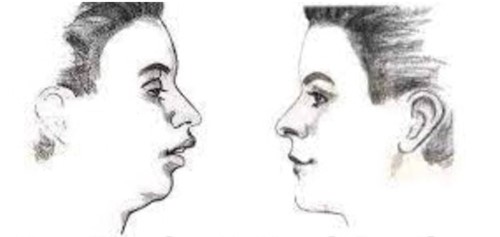Written By: Ann Blau, MS, CCC-SLP, CMT
 You probably breathe without thinking about it. Your body does it automatically without much conscious effort. Nevertheless, it’s important to pay attention to how you breathe. Humans are born obligate nasal breathers, and nasal breathing is known to be healthier and more efficient. Yet, an estimated 40% of adults breathe through the mouth, especially during the daytime. In abandoning the nose, mouth breathers forfeit all the benefits of nasal breathing, which include:
You probably breathe without thinking about it. Your body does it automatically without much conscious effort. Nevertheless, it’s important to pay attention to how you breathe. Humans are born obligate nasal breathers, and nasal breathing is known to be healthier and more efficient. Yet, an estimated 40% of adults breathe through the mouth, especially during the daytime. In abandoning the nose, mouth breathers forfeit all the benefits of nasal breathing, which include:
- warming and humidifying the air as it enters the body
- filtering out allergens, dust, mold, and foreign pathogens
- slowing down breathing (which is important for those who over breathe)
- improving athletic performance
- helping the craniofacial and respiratory structures develop properly, and
- producing nitric oxide (NO)
- NO has antibacterial, anti-viral, and anti-fungal properties; increases oxygen uptake; improves blood flow (as a potent vasodilator that lowers blood pressure and improves cardiovascular health); and bolsters the immune system
As you can see, nasal breathing has considerable advantages over mouth breathing. Professional athletes know this well and leverage the power of nasal breathing when training for competitive sporting events. If you follow tennis, you may have seen the recent eye-catching headline from The U.S. Sun on August 7, 2023:

TALE OF THE TAPE
World No.1 Iga Swiatek baffles tennis fans as she plays with TAPE over her mouth… but one reckons they know why
Well, here’s why: Since nasal breathing increases the efficiency of oxygen delivery to muscles in the body, it can improve physical endurance, which is supremely advantageous to an elite athlete.
Unfortunately, all the health benefits associated with nasal breathing are negated by mouth breathing. In fact, many Orofacial Myofunctional Disorders (OMDs) begin with mouth breathing or decreased efficiency of nasal breathing. The subsequent adaptation of the orofacial muscles and their related functions can lead to disordered breathing patterns that are the hallmark of many OMDs. Therefore, how you breathe really DOES matter. Nasal breathers look, feel, and function much differently than mouth breathers. Look at the picture below. Can you tell who is a nose breather and who is a mouth breather?
To learn more about the difference between nasal breathing and mouth breathing and its implications on Orofacial Myofunctional Disorders, register for my upcoming Live Webinar, Orofacial Myofunctional Disorders, taking place on November 1st.
Visit summit-education.com for more information.
References:
Jones, A. M., Vanhatalo, A., Seals, D. R., Rossman, M. J., Piknova, B., & Jonvik, K. L. (2021). Dietary nitrate and nitric oxide metabolism: Mouth, circulation, skeletal muscle, and exercise performance. Medicine and Science in Sports and Exercise, 53(2), 280–294. https://doi.org/10.1249/MSS.0000000000002470
McKeown, P. (2015). The oxygen advantage: Simple, scientifically proven breathing techniques to help you become healthier, slimmer, faster, and fitter. William Morrow & Company.
Nestor, James (2020). Breath: The new science of a lost art. Riverhead Books.
Disclaimer: Consultation with a trained medical or allied health professional is advised before attempting mouth taping.

